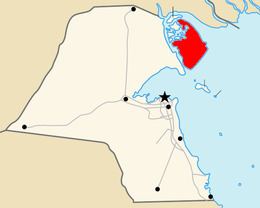21 naval vessels (see text) None | Dates 29 Jan 1991 – 2 Feb 1991 | |
 | ||
Around 22 naval vessels of various types (Including FPB-53, FPB-70, and a TNC-45 ) Several frigates, cruisers, Lynx helicopters and CF-18 Hornets Results Coalition victory, Iraqi Naval Forces destroyed Similar Battle of Ad‑Dawrah, Gulf War, Battle of Failaka, Battle of Phase Line Bullet, Battle of Rumaila | ||
Battle of bubiyan
The Battle of Bubiyan was a naval engagement of the Gulf War, that occurred in the waters between Bubiyan Island and the Shatt al-Arab marshlands, where the bulk of the Iraqi Navy, while attempting to flee to Iran, much like the Iraqi Air Force, was engaged and destroyed by Coalition warships and helicopters.
The battle was completely one-sided. Lynx helicopters of the Royal Navy using Sea Skua missiles were responsible for destroying 14 vessels (3 minesweepers, 1 minelayer, 3 TNC 45 Fast Attack Craft, 2 Zhuk-class patrol boats, 2 Polnocny-class landing ships, 2 salvage vessels, 1 Type 43 minelayer and 1 other vessel) during the battle. The battle saw 21 separate engagements over a course of 13 hours. A total of 21 of the 22 ships that attempted to escape were destroyed. Both surviving vessels were seized by the Iranians.
Also related to the Bubiyan action was the Battle of Khafji, where Saddam Hussein sent an amphibious assault to Khafji to reinforce the city against the Coalition attack. This too was spotted by the Coalition naval forces and subsequently destroyed. The last action of the Iraqi Navy was to fire a Silkworm missile from an inland launcher at the battleship USS Missouri; however, it was intercepted midflight by a Sea Dart missile from the British destroyer HMS Gloucester and destroyed.
The Iraqi Navy, much like the Iraqi Air Force, was a reluctant enemy, relying on passive force and defensive weapons such as naval mines. After the Bubiyan action, the Iraqi Navy ceased to exist as a fighting force at all, leaving Iraq with very few ships, all in poor condition.
